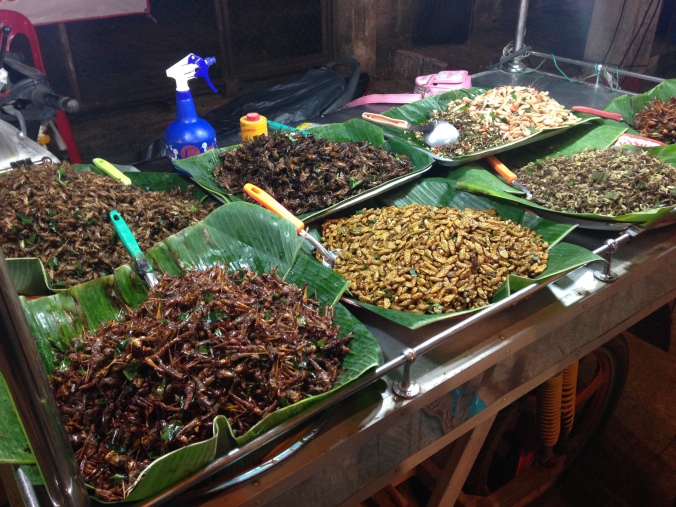Having lived in Thailand for over 7 months now I have become very accustomed to the culture, which in a lot of cases revolves predominantly around food. For example, the British use ‘Hello, how are you?’ as their most common greeting, whereas the Thais say ‘Hello, have you eaten?’. This is common across many South Asian countries, food really does sit at the heart of culture. The vibrancy of Thai cuisine with its different smells, tastes and colours never fails to excite me and deepen my fascination and love for this unique country. Intricacy is the word that springs to mind when I think about Thai food, as does an appreciation for the skill that is required to create a harmonious dish. Thai chefs, whether that be a mother, a daughter, a market seller or a head chef in a top Bangkok restaurant all act as conductors, orchestrating 20 or 30 ingredients to produce an ensemble; a melodic balance of wan (sweet), phet (spicy), preaw (sour) and chim (sweet). Last week, I acted as a judge in a cooking competition for my M2 (Y8) students and the variation in standard was immense; creating the perfect Thai dish truly is an art.
Thai food itself is not where my infatuation with Thai cuisine ends. It is the way in which it is prepared, served and eaten which adds to the overall eating experience in Thailand. In many cases, food will be prepared on the floor using back-to-basics methods and tools. I love this cross-legged preparation mostly because of its more inviting and communal feel as opposed to a single chef slaving over a hot stove. Another thing I’ve come to adore is the absolute, unshakable rule that Thai food is for sharing. When explaining how in England, we order separate meals to devour individually, people are very surprised. It’s one cultural norm I’d love to take home with me but I suspect putting our chicken ceaser, Hawaiian pizza, carbonara, sirloin steak and shepherds pie in the centre of the table to share would look slightly unconventional to the other diners in Bella Italia.
Here are some of my favourite Thai dishes;
Som Tam (papaya salad)
Considering I live in Issan, it should come as no surprise that som tam is my number one favourite Thai dish, as it originated in this region and is considered the most popular food amongst Issan people. I first realised the importance of som tam to Issan people after I picked up a friend of a friend from the airport, arriving home to Issan after a trip to Bangkok, and the first thing we did was stop off to eat som tam; ‘When Issan people go on holiday, the first thing we do when we return is eat som tam!’. This spicy, flavoursome salad can be constructed in various ways however the typical som tam will contain green papaya, carrots, tomatoes, coriander, basil, and peanuts with a dressing of garlic, limes, fish sauce, sugar, shrimp paste and a hella lot of chillies. The main body of the salad can be changed for example to green mango or long beans and long rice noodles called ‘ka pom’ can be added but as long as the same dressing is used it is still regarded as good old som tam.
Naem khao (fermented pork rice salad)
This is a bit of a random one but nevertheless a delicious one. Naem khao is a salad originating in Laos and it is made with deep-fried rice balls, fermented pork sausage called som moo, chopped peanuts, coconut, shallots, mint, coriander, lime juice and fish sauce. Although this is not a common Thai dish, it is certainly one of the most delicious I have tasted thus far.
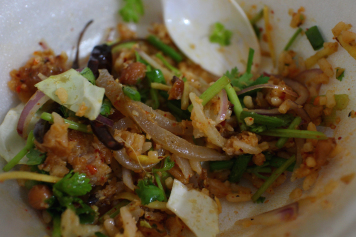
Tom yam
This is a very popular spicy and sour Thai soup usually made with shrimp cooked in an aromatic broth of herbs and spices. It is normally served with rice and can be made with other meats such as beef and chicken. This hearty, hot soup certainly warms your cockles and it feels to me like the Thai equivalent of Nigella’s Jewish Penicillin (chicken broth). Tom yam days are good days.
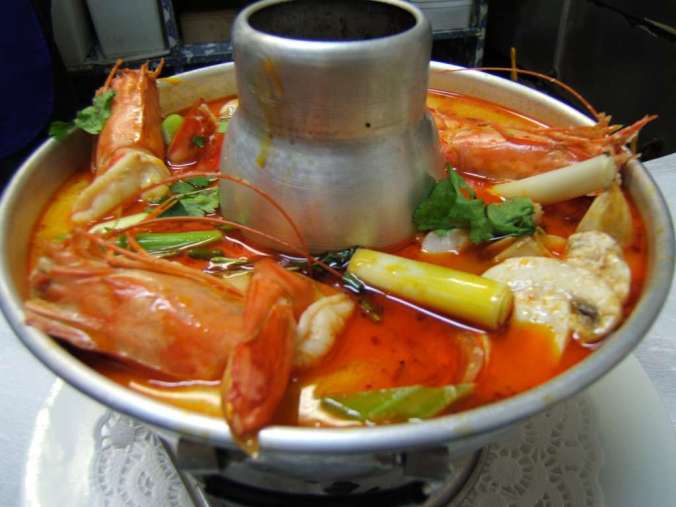
Khanom Thuay
Thai sweets are absolutely delicious (arguably too delicious) but are very different from the average packet of haribo you might treat yourself too in the UK. Most Thai sweets include sweet sticky rice, coconut, jelly or tropical fruit; very few (if any) additives or preservatives are added. Khanom thuay is no different. This is a coconut milk custard made in bite sized bowls and is wonderfully gooey and sweet.
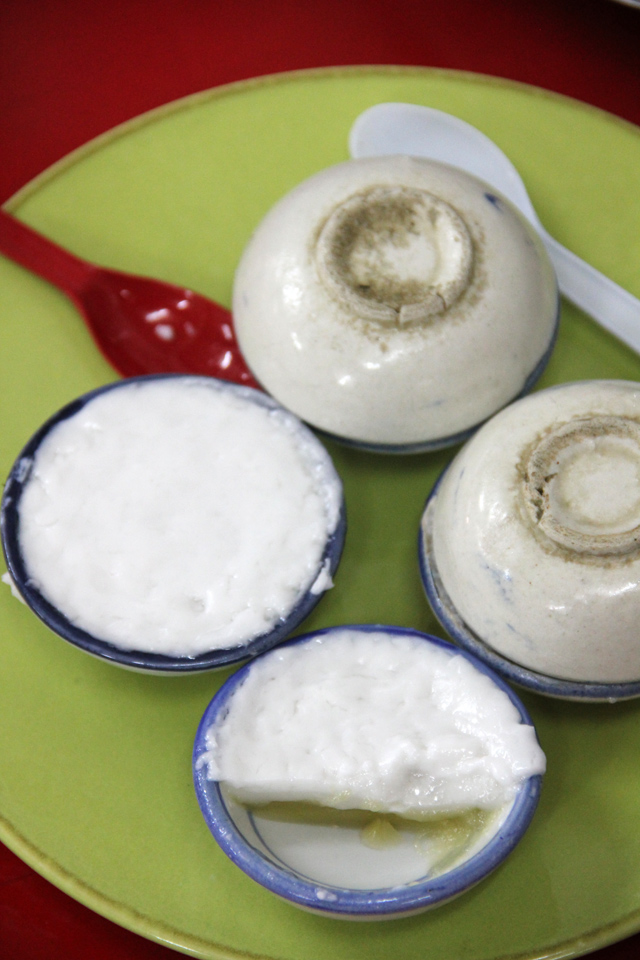
Coconut
Of course coconut is not specific to Thailand but it has to be included in this list because of the amount I consume living here! Coconut is versatile to say the least. It can be sweet and savoury, paired with fruit in desserts, used with rice as an accompaniment to a meal or act as the base to a traditional Thai green curry. However, my favourite way to eat coconut is in its simplest form. There is no greater treat than watching a coconut seller slice the top off a coconut, slip a straw inside and hand it over. Not only is this distinctive fruit a refreshing drink, it also acts as a snack as you can peel the strips of milky white flesh from the inside after you have quenched your thirst. Mother Nature did well with her coconuts.
Gluai (Banana)
You might be thinking as with coconuts, that bananas cannot be classed as specific to Thailand, but indeed I think they can. Not the actual banana, but the wide-ranging variation of bananas in this country is unlike anything I’ve ever seen. Not only can they be all kinds of shapes, sizes and colours, they can also taste entirely different depending on which kind you decide on. Some are sweet and soft, some are hard and sour but one thing’s for sure; they are all a thousand times better than those ones sitting on the fruit aisle in Tesco express back home. Additionally, Thai people can pair bananas with all sorts of things to change their taste. For example, pair a banana with sticky rice and coconut milk, wrap it in a leaf and steam it and you have an incredible dessert. Additionally, put your banana on a stick and grill it and you have a slightly blackened piece of heaven (add toffee source and you’ve revolutionised the banana business forever).
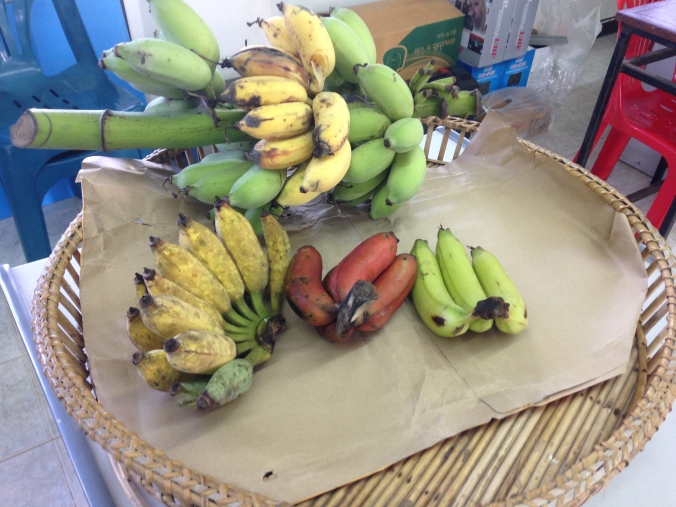
Khao phat gai or khao phat muu (chicken fried rice or pork fried rice)
This may seem like an exceedingly simple dish but its name is deceptive. Usually each version of khao phat will contain 10-15 ingredients and it certainly requires the skill of a Thai cook to get this dish perfect. An easy one to order though if you’re not looking for anything too exotic (or if the menu is entirely in Thai and you have no clue what anything means – this dish is a fail safe I promise).
Sai Krok (Issan fermented Sausage)
Just some bloody good sausage.
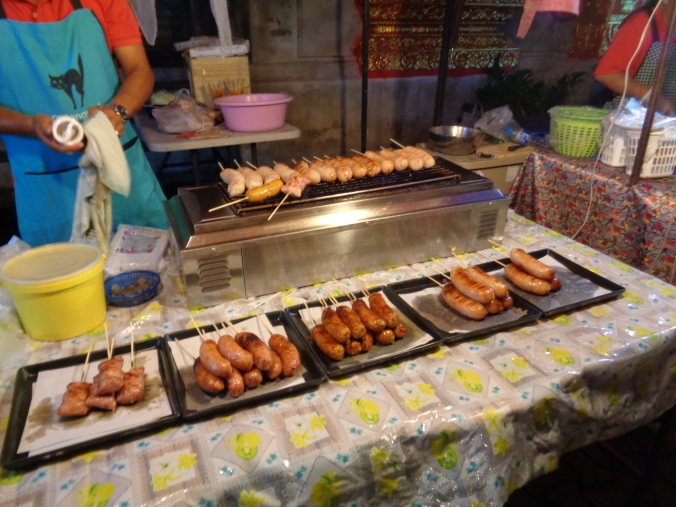
Pla Pao (Thai grilled fish)
Although initially rather intimidating, this is a delicacy in Issan and one that I’m glad I gave a shot. It is now one of my favourites and whenever this is served up I am very happy. It takes some skill to not constantly end up with a mouth full of bone but it’s definitely worth the effort. The only quarm i’ve ever had with pla pao, was when a fellow diner assured me that there was a positive correlation between the number of fish brains you ate and your IQ. I’m sure you can imagine this didn’t end well for me.
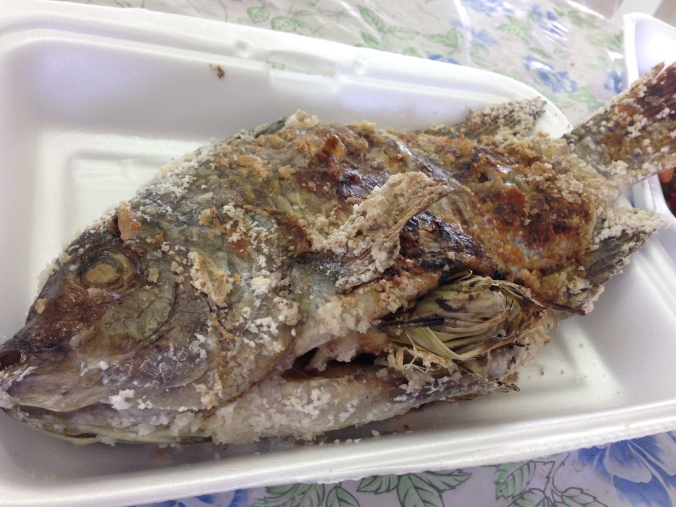
Moo dad diew (Thai pork jerky)
This is an absolute favourite of mine for two reasons; one, because it is incredibly tasty and two, because it cured me of my irrational aversion to pork in Thailand. Moo dad diew is slices of pork which are marinated in garlic and soy/fish sauce then laid in the sun for a few hours before being grilled or fried. Finally I understood that all this meat lying around was due to a dehydration process taking place and not a death wish!
There are many many more Thai dishes and foods which I have grown incredibly fond of and however much I would love to brag some more about my consistent access to (in my opinion) the world’s greatest cuisine, I suspect listing every delicious Thai food would be a tad excessive. The one piece of advice I would give to tourists is DON’T JUST ORDER PAD FREAKING THAI! Don’t get me wrong, pad thai is really nice but there is SO much to try and if you’re scared to order something, whether that be due to pronunciation or ingredients, don’t be. Some of the nicest things I’ve eaten were things I almost certainly would not have tried if explained prior to consumption. Even some good old non mai shouldn’t be avoided, we force feed geese so we can pay stupid amounts to eat their enlarged livers so I can’t understand what’s wrong with a deep fried woodworm.
